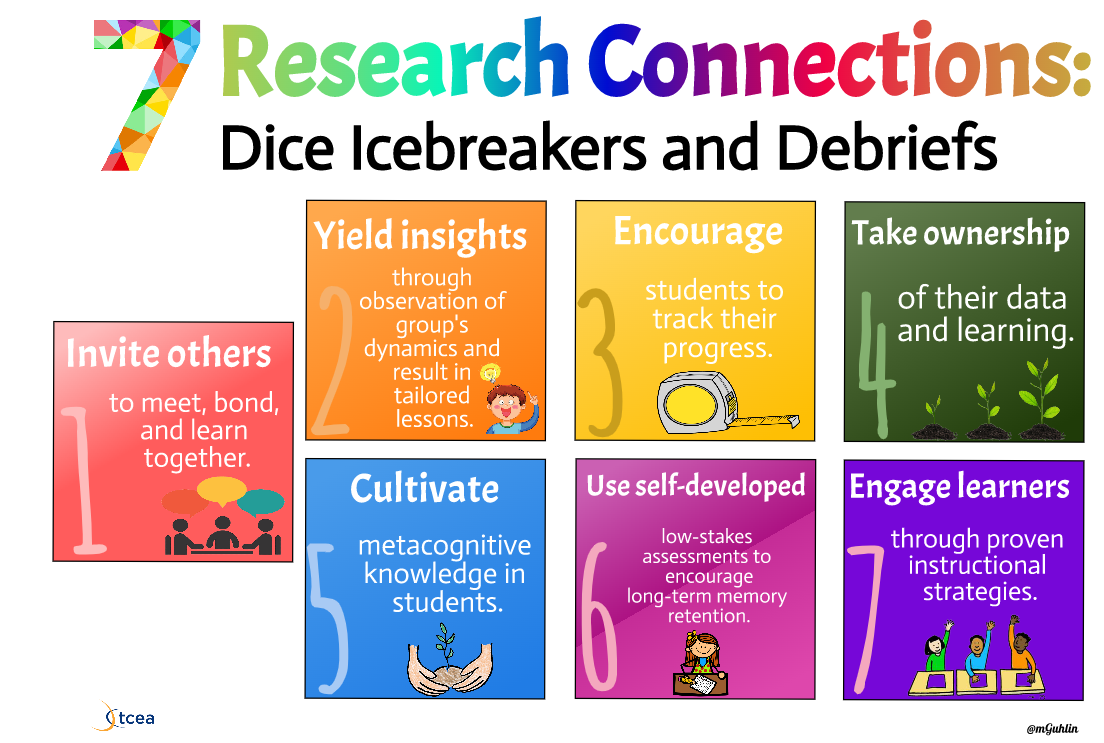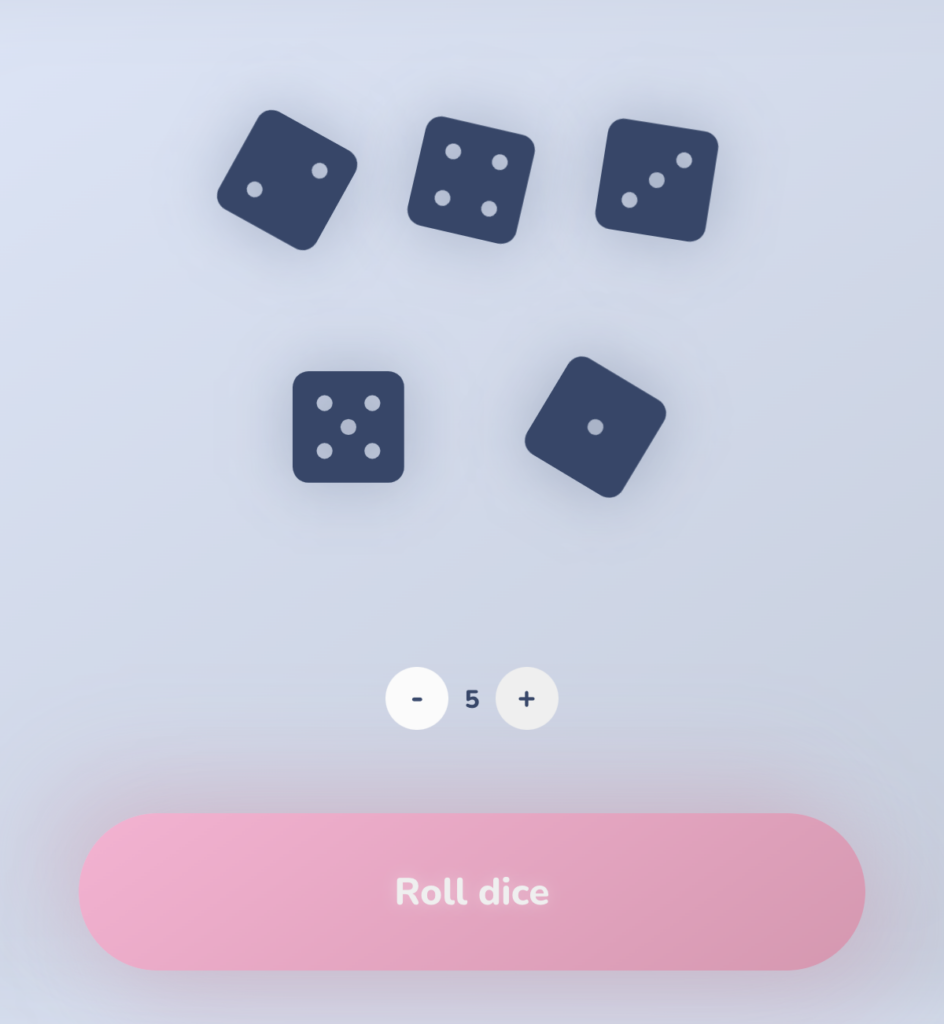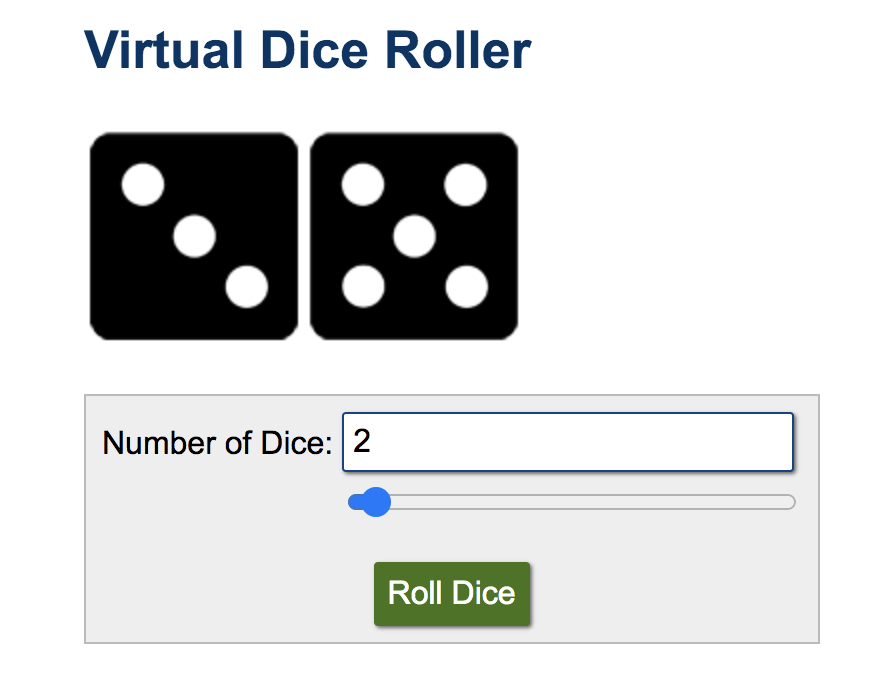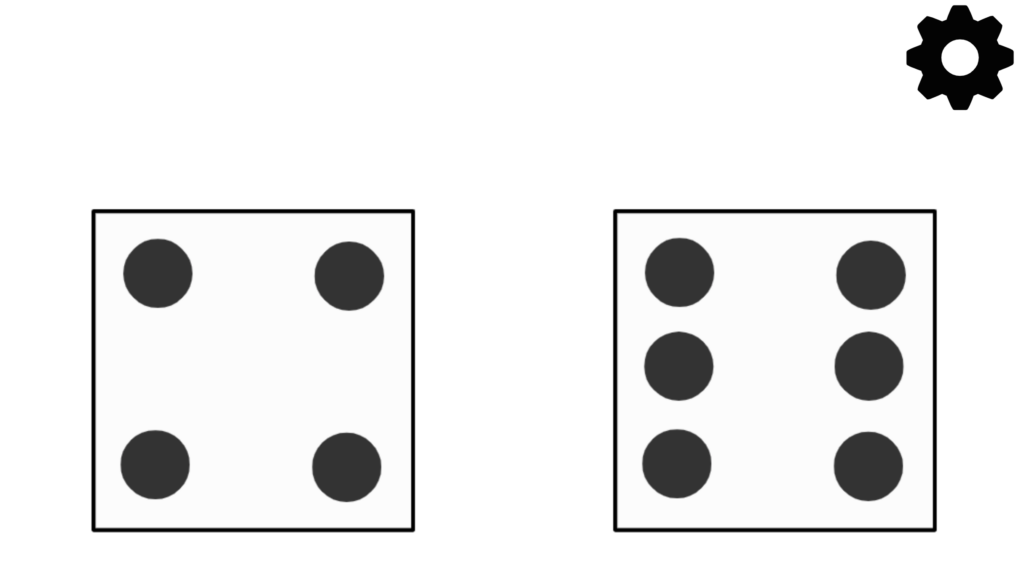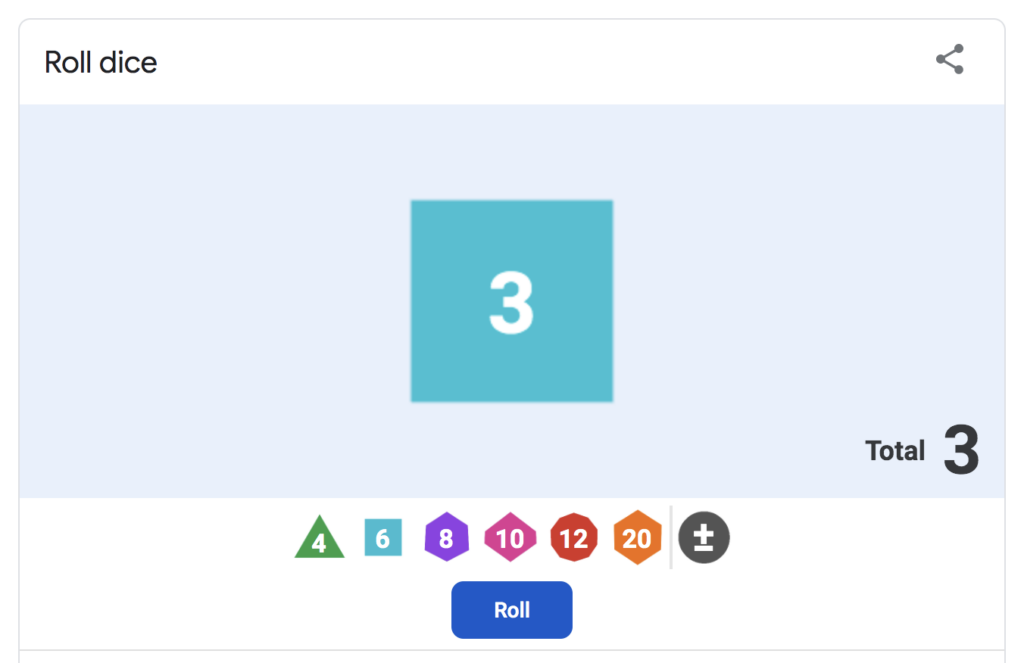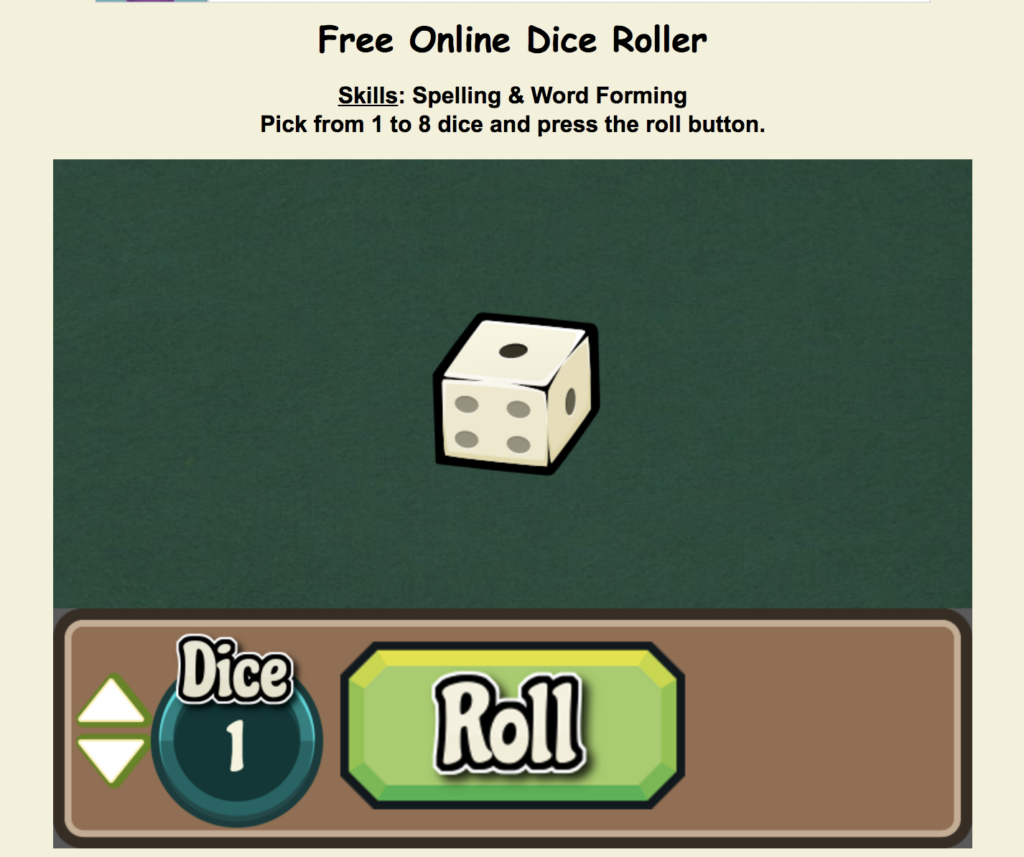If you’re needing to bring people together in a new situation, then ice breakers are one way to do that. If you’re wanting to encourage self-assessment and reflection, entry and exit tickets can work wonders. But a different type of icebreaker and reflection tool can also be handy: the dicebreaker and the dice debrief.
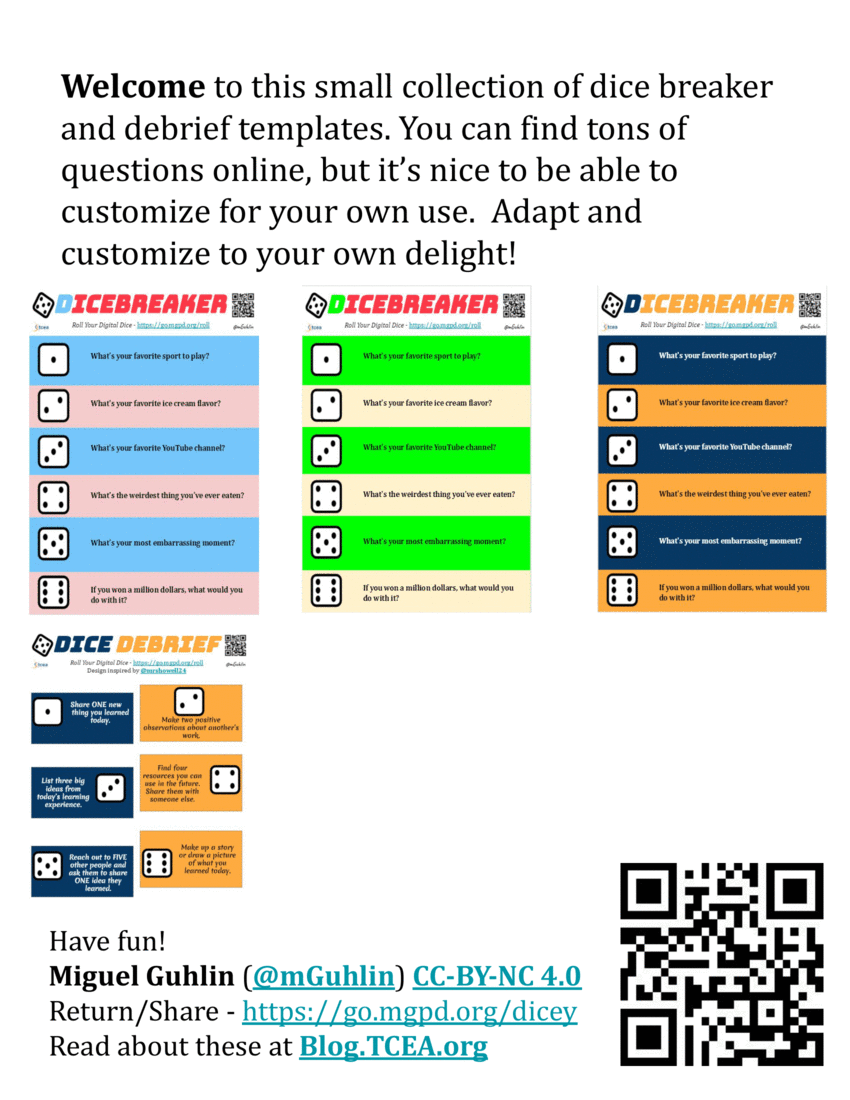
Dice Activities as Icebreakers
You may already know that icebreakers are great tools. You can find TCEA’s ebook, Digital Icebreakers That Shatter, for free online. And, of course, a TechNotes collection of blog entries explores various icebreaker activities.
An NCBI study reveals that icebreaker activities:
- Encourage participants to bond and form a new team
- Get people from different backgrounds to meet
- Invite others to become involved with learning about new subject matter
- Help the group leader become acquainted with the participants and interpersonal interactions within the group
- Yield observed information on the group’s dynamics, which can assist group leaders in tailoring lessons to group needs
How Dicebreakers Work
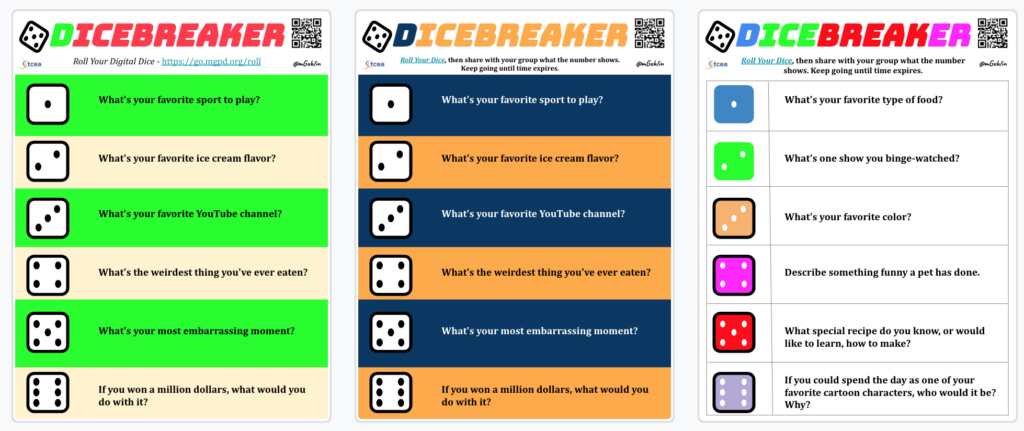
The process for setting up a dicebreaker is simple:
- Since the printed dot count ranges from one to six, assign each number of dots an activity or question for a total of six.
- Pass out or share a die with each group of students. If using stations, you can place a die at each station, then have students roll that die upon arriving.
- When students roll a number, they share their coordinating response with others at the station or in the group.
Consider using a dicebreaker grid like the one shown below. Rachael Mann (@RachaelEdu) shared a similar version that inspired this recreation via Twitter. She suggests using VirtuWorld.net’s Roll an Online Die for this. “I do not know who to credit for the ice breaker grid,” Rachael says.
Want a list of digital dice? Be sure to read Peggy Reimers’ Try Your Luck with Five Free Virtual Dice blog entry. Dice can be used for many activities and games in the classroom. Discover five virtual dice options you can use with your students today.
I’ve taken the liberty of remaking it with modifications.
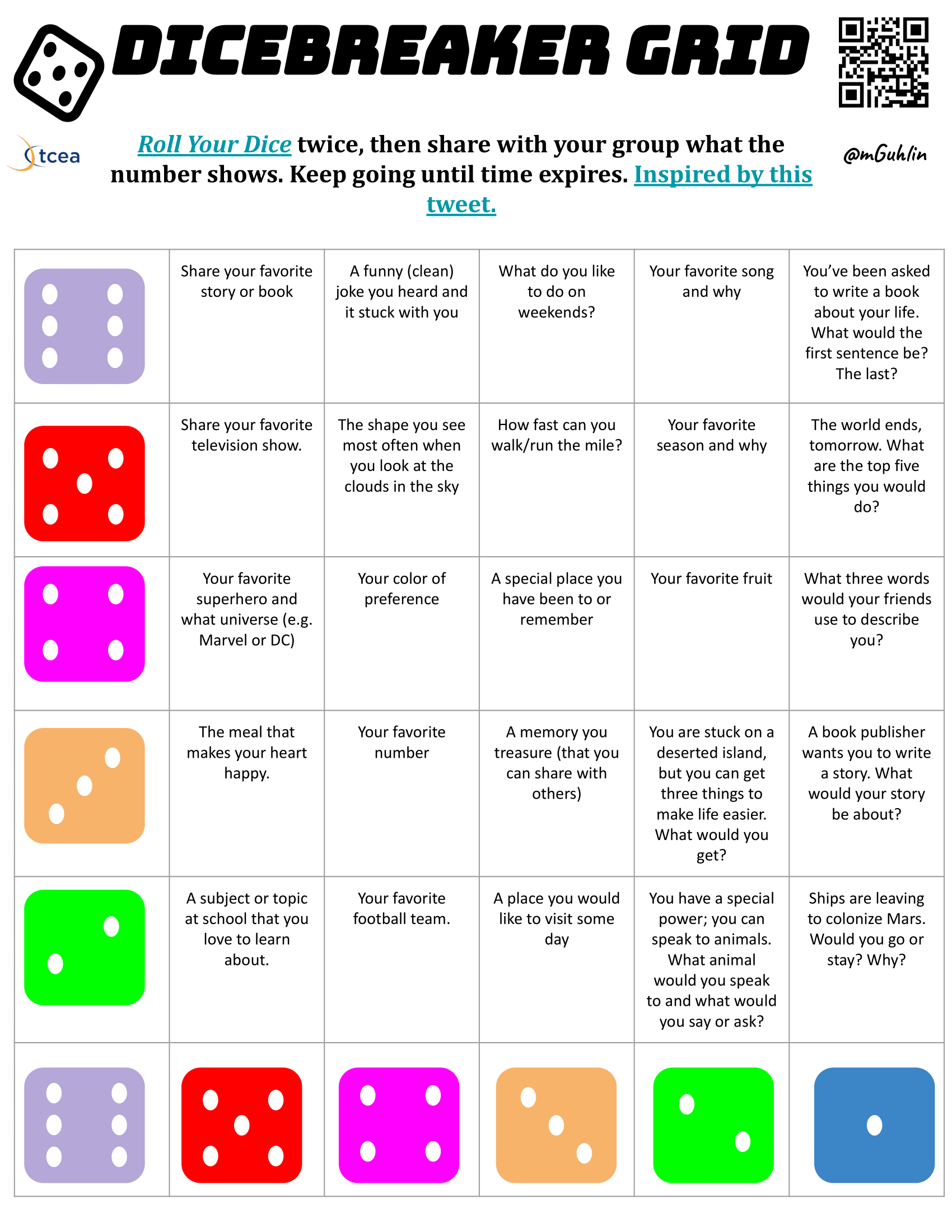
Here’s one example of dicebreakers in action:
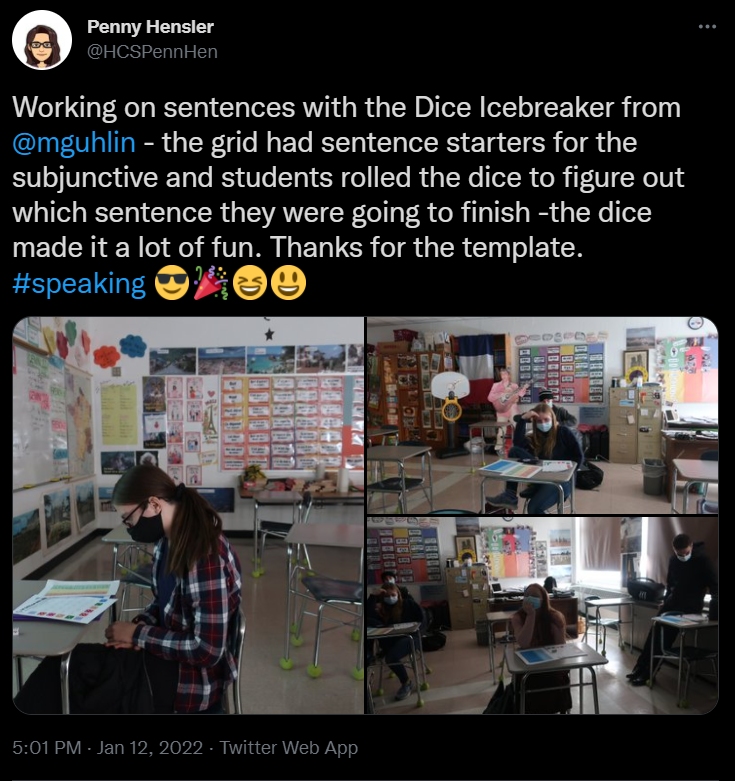
Dice Activities for Self-Judgement and Reflection
You can use dice debriefing activities as entry or exit tickets, for example, to engage students in self-judgement and reflection. Known as self-judgment, research has shown its importance as it enjoys an effect size of 0.75 (as of John Hattie’s latest research). Self-judgement and reflection have the potential to “considerably accelerate” student achievement. It is proven effective when students self-assess knowledge before learning and then reflect and self-evaluate for understanding post-learning.
There are several strategies you can take advantage of in the classroom. Each can make self-judgement and reflection a daily occurrence, even routine, and you can use dice debrief activities to engage students this way.
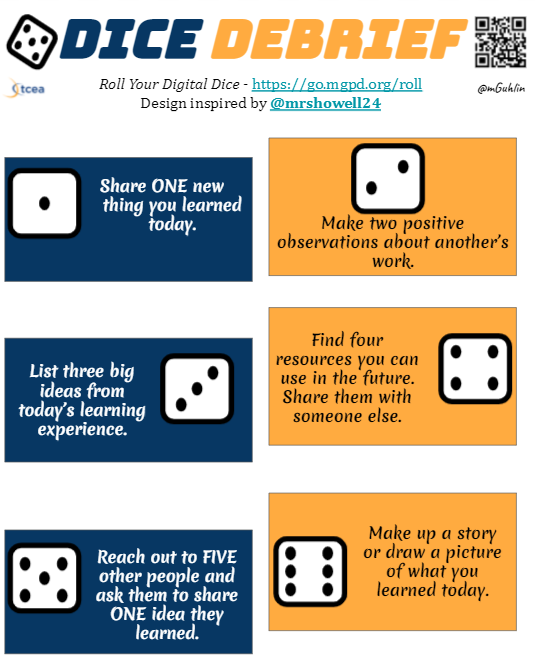
View or get your own copy of this graphic via Google Slides
Dice Debrief Questions
Here are a few debrief questions you can use in a dice debrief:
- What did you learn today?
- Why does what you learned matter?
- List three big ideas you got out of today’s lesson.
- What process did you go through today? Did it work? Why or why not?
- What resources (e.g. books, websites) did you use today?
- Did what you write or make meet your goals?
- How do you feel about your work today? Why?
- What would you change or do differently?
Additionally, such activities work well as entry tickets when you ask questions like:
- What do you think we’ll be learning about today?
- What do you already know about this topic?
- What areas would you like to learn more about?
- What predictions (or guesses) can you make about what you will be learning today?
- How do you feel about this subject?
- What are some areas you might need help in?
You can also adapt ideas from this blog entry on bell ringers. How could you adapt exit tickets for this fun variation?
There are many different ways to approach dice debrief. Stephanie Howell (@mrshowell24) shared one way in this Google Doc. She offers this video:
For fun, I took a stab at making a few templates of dice debriefs as well. Thanks for the inspiration, Stephanie!
Need More Inspiration?
You may have found these templates useful, but there are many more online. A Roll and Respond list of questions caught my eye. It included questions such as:
- What are you looking forward to?
- What are you looking forward to doing?
- If you could spend an hour with someone, who would it be?
- If you could have something to help, what would it be?
- How would you describe this idea to an alien from outer space?
- How is this the same or different?
Find some more ideas in this Wakelet collection, Dicey Learning.
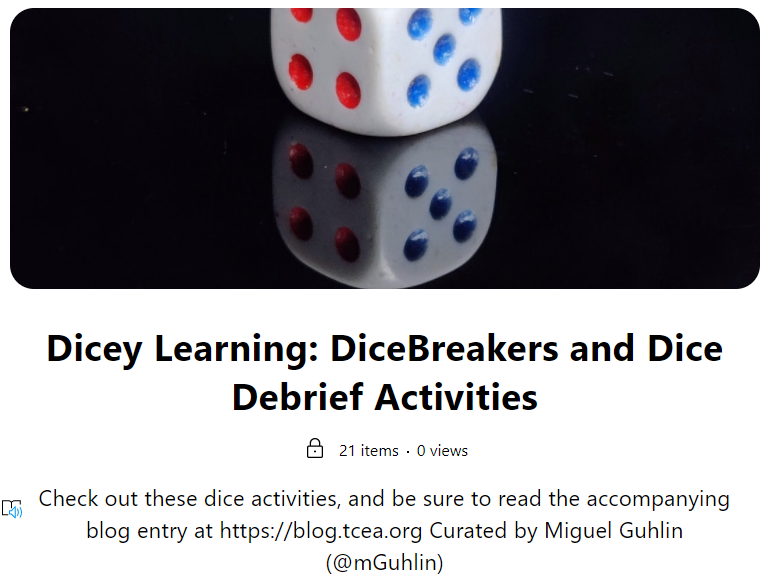
Dicey Learning: A Wakelet Collection
BONUS Activity: Roll a Story
You can also use dice to incite and guide creative writing. Create your own Roll a Story like the one below:
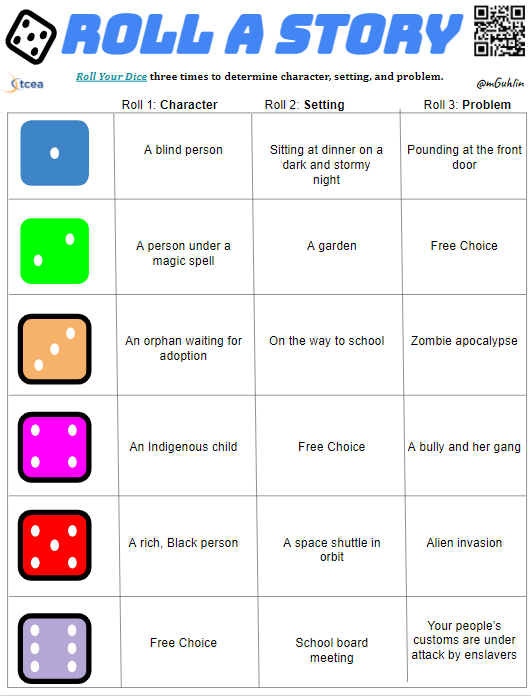
Why don’t you give making your own dicebreakers or dice debriefs a go? Do you have any other ideas or ways you’ve used dice in your classroom? Please share with us in the comments, and if you try any of the activities mentioned today, let me know how it goes.
The header graphic was made with Sketchpad. Get the Sketchpad file via this link, save, and open via the Sketchpad website.
But, Wait, There’s More!
Several of you have taken the DiceBreakers/Debrief templates and made your own. Below, you will find a few that have been shared:

